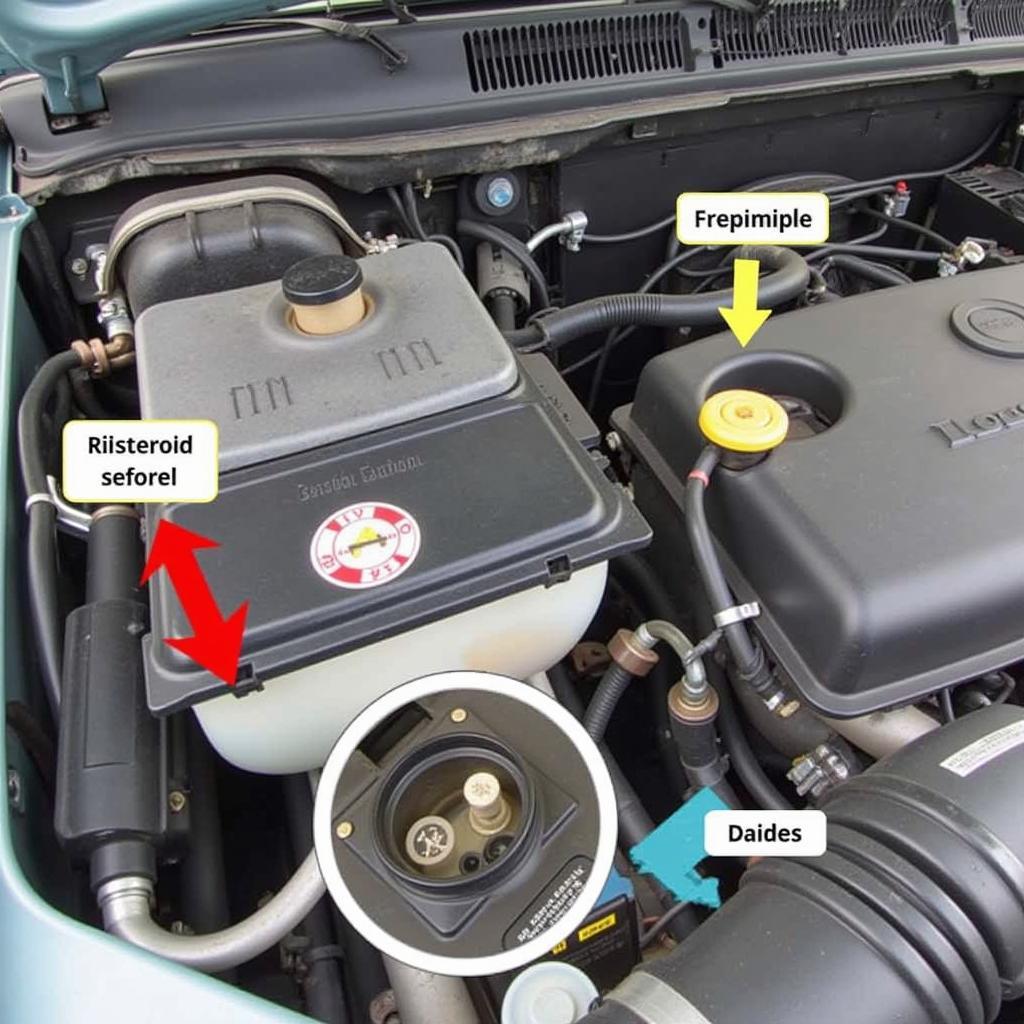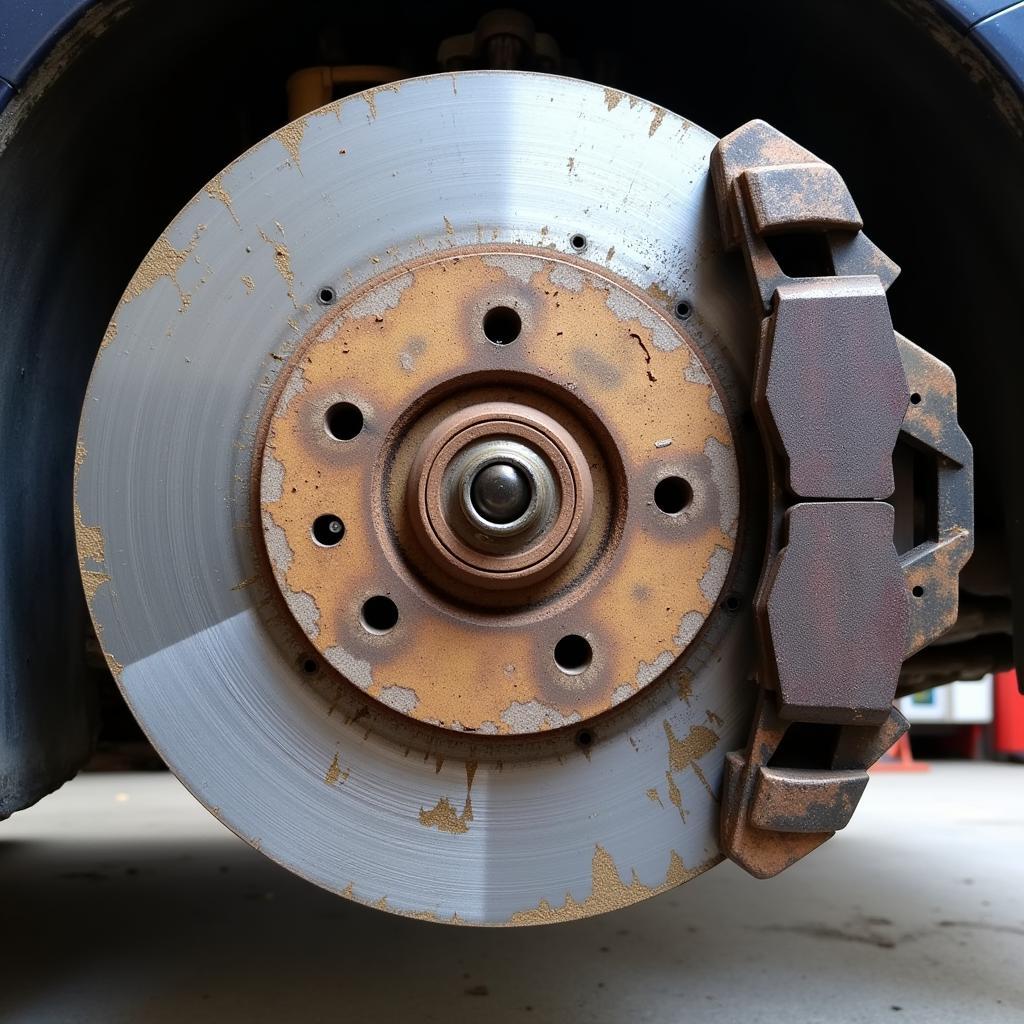The dreaded brake warning light glaring at you from your 2004 Toyota Sienna’s dashboard can be a real cause for concern. Why won’t that 2004 Toyota Sienna brake warning light go off? This article will delve into the common causes, diagnostic steps, and potential solutions for a persistent brake warning light in your 2004 Toyota Sienna. We’ll provide you with the information you need to understand the issue and, if possible, rectify it yourself, potentially saving you a trip to the mechanic.
Understanding Your Sienna’s Brake Warning Light
The brake warning light serves as a crucial safety indicator, alerting you to potential problems within your braking system. It can illuminate for several reasons, some minor and easily addressed, while others require immediate professional attention. Ignoring this warning can lead to serious safety risks and costly repairs down the line.
Common Causes of a Persistent Brake Warning Light
Several factors can trigger a stubbornly lit brake warning light in your 2004 Toyota Sienna. These include:
-
Low Brake Fluid: This is often the most common culprit. A leak in the brake lines, worn brake pads, or a faulty master cylinder can cause brake fluid levels to drop.
-
Worn Brake Pads: As your brake pads wear down, they trigger a sensor that activates the warning light. This indicates it’s time for a brake pad replacement.
-
Faulty Brake Sensor: Sometimes, the sensor itself can malfunction, triggering the light even when the brake pads are in good condition.
-
Parking Brake Engaged: While seemingly obvious, a partially engaged parking brake can also illuminate the warning light. Ensure the parking brake is fully released.
-
ABS Issues: Problems with the Anti-lock Braking System (ABS), such as a faulty wheel speed sensor or a malfunctioning ABS module, can trigger the brake warning light.
-
Master Cylinder Problems: A leaking or failing master cylinder can lead to low brake fluid and activate the warning light.
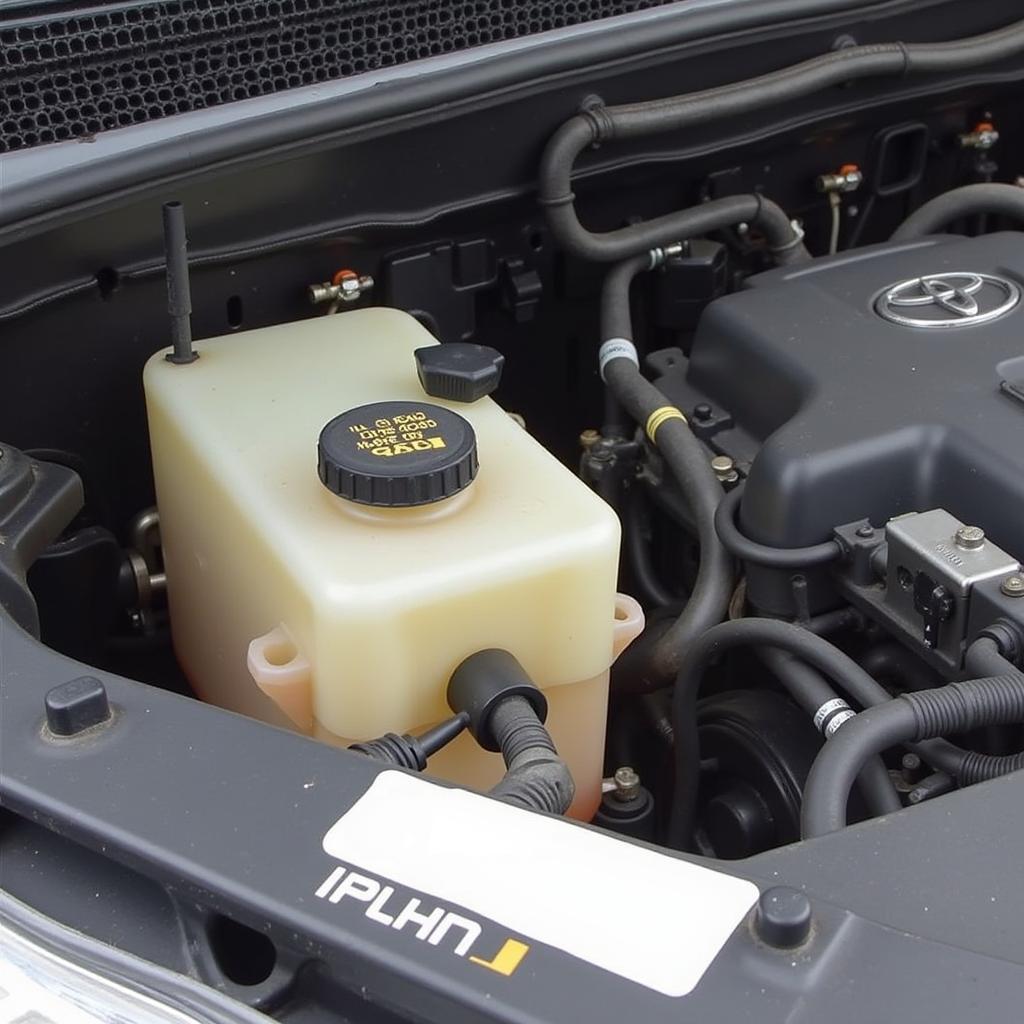 Checking the brake fluid reservoir in a 2004 Toyota Sienna
Checking the brake fluid reservoir in a 2004 Toyota Sienna
Diagnosing the Problem
Before rushing to the mechanic, there are a few simple checks you can perform yourself to pinpoint the cause of the persistent warning light.
-
Check the Parking Brake: Ensure the parking brake is fully disengaged.
-
Inspect Brake Fluid Level: Locate the brake fluid reservoir under the hood and check the fluid level. If it’s low, top it off with the correct type of brake fluid specified in your owner’s manual. However, persistently low fluid suggests a leak, which needs professional attention.
-
Visually Inspect Brake Pads: If possible, take a look at your brake pads through the wheel spokes. If they appear excessively thin, they likely need replacing.
“Regular brake inspections are crucial,” says automotive expert, David Miller, ASE Certified Master Technician. “Catching issues early, like low brake fluid or worn pads, can prevent more serious and costly problems down the road.”
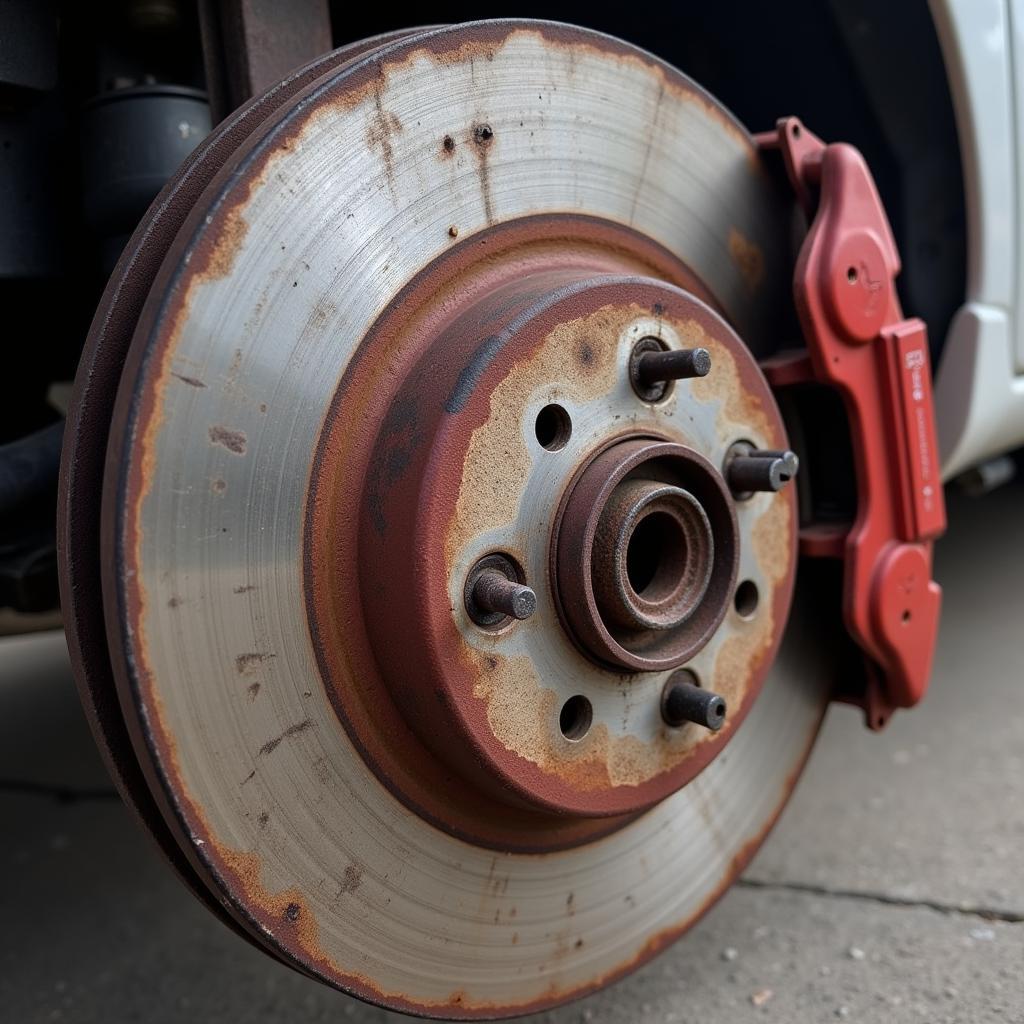 Worn brake pads on a 2004 Toyota Sienna
Worn brake pads on a 2004 Toyota Sienna
Solutions and Repairs
Depending on the diagnosis, the solutions range from simple DIY fixes to more complex repairs requiring a professional mechanic.
-
Adding Brake Fluid: If the fluid level is low, topping it off is a temporary fix. However, be sure to identify and address the underlying cause of the leak.
-
Replacing Brake Pads: Worn brake pads require replacement. This can often be done at home with basic tools, but if you’re unsure, consult a professional.
-
Addressing ABS Issues: Diagnosing and repairing ABS problems typically requires specialized diagnostic equipment and expertise. It’s best to leave this to a qualified mechanic.
-
Repairing or Replacing the Master Cylinder: A faulty master cylinder needs professional repair or replacement.
“Ignoring a persistent brake warning light can be dangerous,” advises Sarah Chen, Automotive Engineer. “Addressing the issue promptly ensures your safety and prevents further damage to your braking system.”
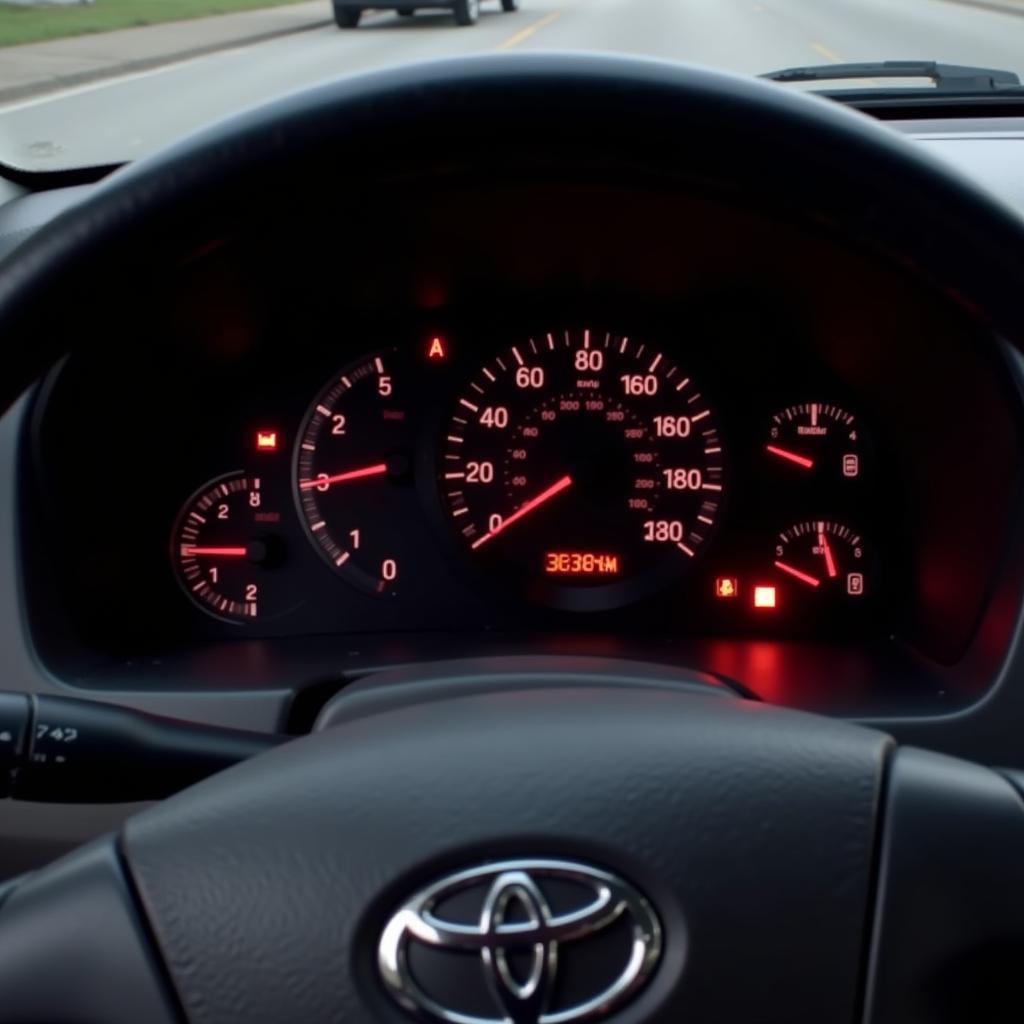 Brake warning light illuminated on the dashboard of a 2004 Toyota Sienna
Brake warning light illuminated on the dashboard of a 2004 Toyota Sienna
Conclusion
A 2004 Toyota Sienna brake warning light that won’t go off is a serious issue that shouldn’t be ignored. By understanding the potential causes, performing some basic diagnostics, and taking appropriate action, you can ensure your safety and prevent further damage to your vehicle. While some fixes can be handled at home, others require the expertise of a qualified mechanic. Don’t hesitate to seek professional help when needed.
FAQ
-
What does the brake warning light mean? The brake warning light signals a potential problem with your braking system, such as low brake fluid, worn brake pads, or issues with the ABS.
-
Can I drive with the brake warning light on? It’s not recommended to drive with the brake warning light on. Doing so could compromise your safety.
-
How much does it cost to fix a brake warning light issue? The cost varies depending on the underlying problem. It can range from a few dollars for brake fluid to several hundred for more complex repairs.
-
How often should I check my brake fluid? It’s good practice to check your brake fluid level at least once a month.
-
What type of brake fluid does a 2004 Toyota Sienna use? Consult your owner’s manual for the correct brake fluid type. Using the wrong type can damage your braking system.
-
Can I replace my brake pads myself? Yes, with the right tools and some mechanical knowledge, you can replace your brake pads. However, if you’re unsure, consult a professional.
-
What should I do if the brake warning light stays on after replacing the brake pads? If the light remains on after replacing the pads, there might be another issue, such as a faulty sensor or a problem with the ABS. Consult a mechanic for further diagnosis.

